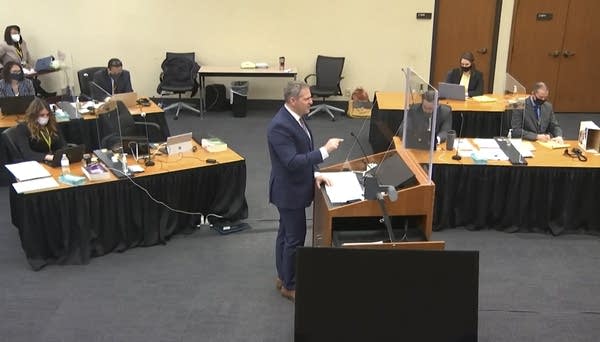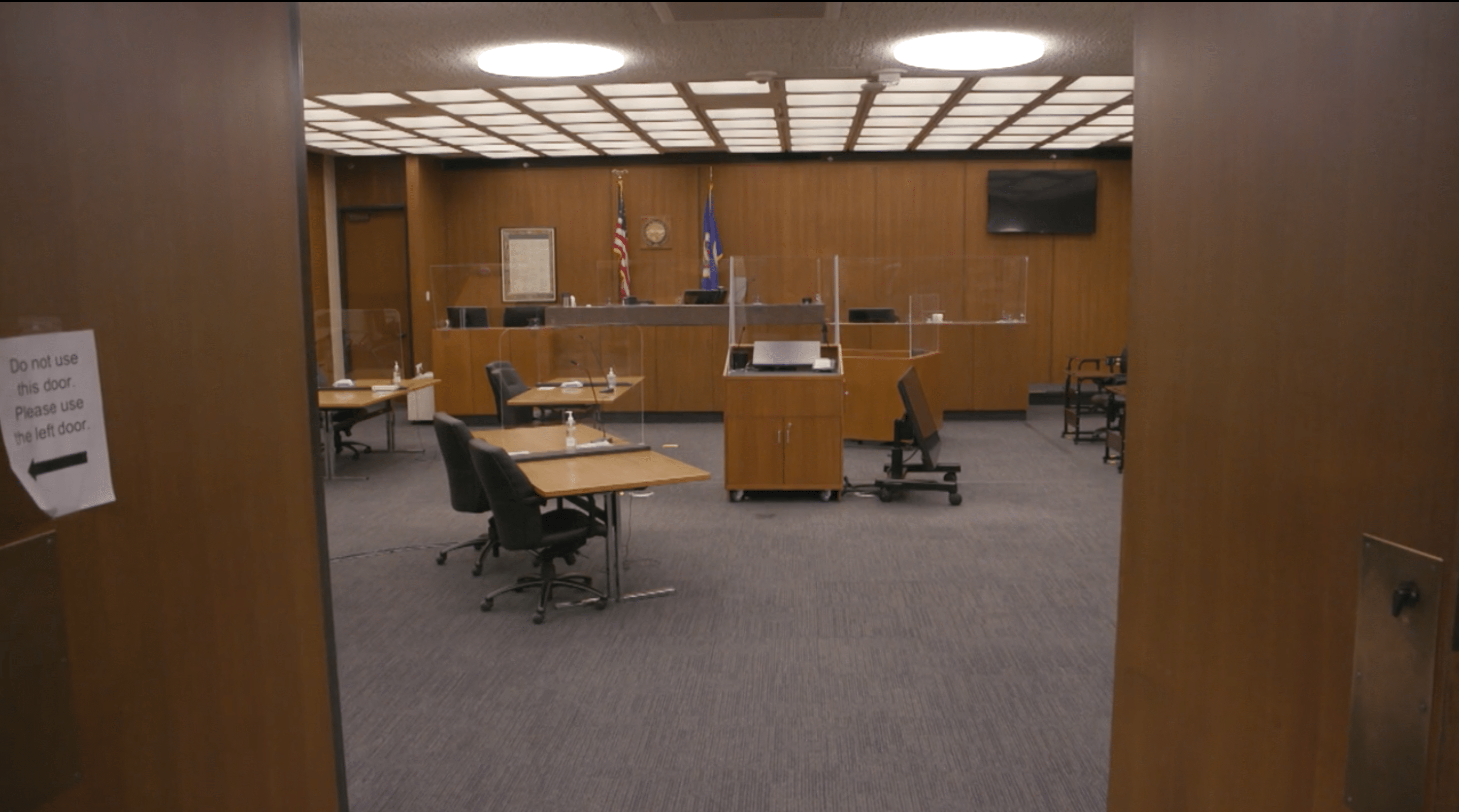Televised Chauvin trial due to pandemic yields wide access — and concern

Go Deeper.
Create an account or log in to save stories.
Like this?
Thanks for liking this story! We have added it to a list of your favorite stories.
MPR News will stream live coverage of the trial on Facebook at 9 a.m. Some images or material discussed during the trial will be disturbing to many viewers. Watch Monday’s proceedings here.
Opening statements are set for Monday in a trial with international attention, and for the first time, the world will be able to see every twist and turn of the case from a Minnesota courtroom, thanks to an unprecedented decision by Judge Peter Cahill.
Many media outlets — including MPR News — will livestream the trial of former Minneapolis police officer Derek Chauvin, after pressing for access. But you don’t need social media, internet access or even cable to watch the proceedings. In the Twin Cities, all it takes is a television set with antenna. Court TV’s live coverage is on channel 11.2.
Chauvin is charged with second-degree unintentional murder, third-degree murder and second-degree manslaughter in the killing of George Floyd last May. A video of Chauvin with his knee on Floyd’s handcuffed body as he pleaded for air sparked widespread protests last summer.
Turn Up Your Support
MPR News helps you turn down the noise and build shared understanding. Turn up your support for this public resource and keep trusted journalism accessible to all.
This is the first time a Minnesota trial has been broadcast. Unlike Iowa, Wisconsin, and other states, courts here have long opposed electronic media coverage. University of Minnesota journalism and law professor Jane Kirtley said at least in the Chauvin case, COVID-19 and the judge’s decision changed everything.
“I don’t think we can discount the significance of the pandemic here. The fact that social distancing is required for this trial and that it is a trial of international magnitude meant that Judge Cahill said I’ve got to do something to make access meaningful,” Kirtley said.
Hennepin County courtrooms are small, so pandemic spacing requirements meant the modest public gallery had to go. The reconfiguration left just two seats for reporters and one each for the Chauvin and Floyd families.
In 2018, the Minnesota Supreme Court cracked open the door to TV coverage, but only for sentencing hearings. State judicial rules ban cameras at trial unless both the prosecution and defense consent.
Chauvin’s attorneys favor televising the proceedings. But state Attorney General Keith Ellison’s office, which is prosecuting the former officer, never consented to the TV coverage. In filings, Assistant Attorney General Matthew Frank wrote that live video could intimidate witnesses and make them less likely to testify. He argued instead for closed-circuit TV to overflow rooms.

Retired Hennepin County Judge Kevin Burke said Judge Cahill ultimately decided that the U.S. Constitution supersedes state court rules.
“I don’t think that we have the right to limit how journalists report what we do. I think that’s very dangerous. If you look at the countries that don’t have a free and independent judiciary, they all don’t have a free and independent media that cover them,” Burke said.
Nevertheless, the judge set strict limits. Video of Floyd family members and juvenile witnesses is prohibited without their consent. The cameras may not zoom in on the counsel tables, other than at verdict time. And jurors’ faces may not be shown at all. Cahill even had a sheet of plexiglass removed after a person’s partial reflection appeared on camera during the first day of jury selection.
The death 10 months ago of George Floyd, a Black man, and now the trial of the white former cop have heightened anxiety across Minneapolis, said Jaton White, who leads community wellness efforts at the Northside Achievement Zone.
White helped organize a healing event last Thursday at 38th Street and Chicago Avenue. It included music and a shared meal, and mental health professionals were on hand.

While it’s good that people can watch the proceedings, White said she worries that it’s all too immediate and painful.
“There are people with some mental health and emotional damage that might not be repairable if we don’t start doing things right now that are preventative,” White said. “And putting this trial on TV is not one of those preventative measures. However people want to know, so I get that too.”
Additional healing sessions are planned so people can have the time and space to process what they’ll see and hear from the courtroom, White said.


